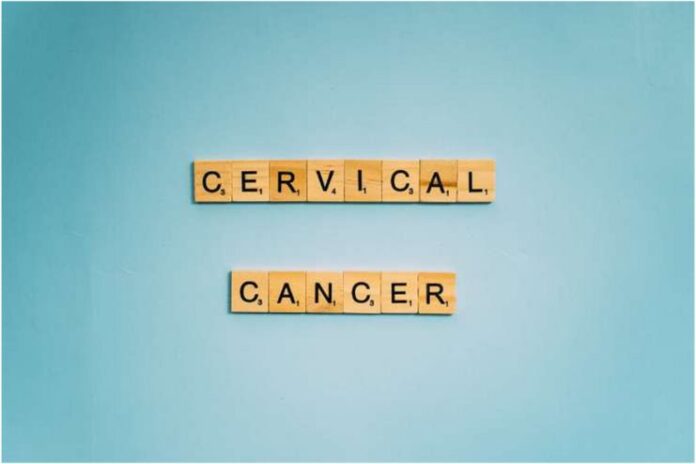Affiliate Disclaimer
Some links in this article are affiliate links. We may earn a small commission if you make a purchase through these links, at no extra cost to you. We only recommend products we find useful to our readersOne of the most prevalent gynecologic cancers is cervical cancer. Diet and illness risk, including the chance of getting some types of cancer, are related, according to research.
Human papillomavirus (HPV), a common sexually transmitted virus, is the primary cause of cervical cancer. Although it can occasionally result in cervical cancer, it is typically harmless. According to a study, a woman’s body may be able to get rid of HPV if she eats one or more servings of specific veggies every day.
In addition to helping the body fight off HPV, a diet rich in antioxidants, carotenoids, flavonoids, and folate—all of which are present in fruits and vegetables—can also prevent an HPV infection from turning cervical cells into malignant tumors.
In this article, we will explore some of the best foods to include in your diet to help protect against cervical cancer.
Read More: 10 Early Warning Signs of Cervical Cancer You Shouldn’t Ignore
1. Leafy Green Vegetables
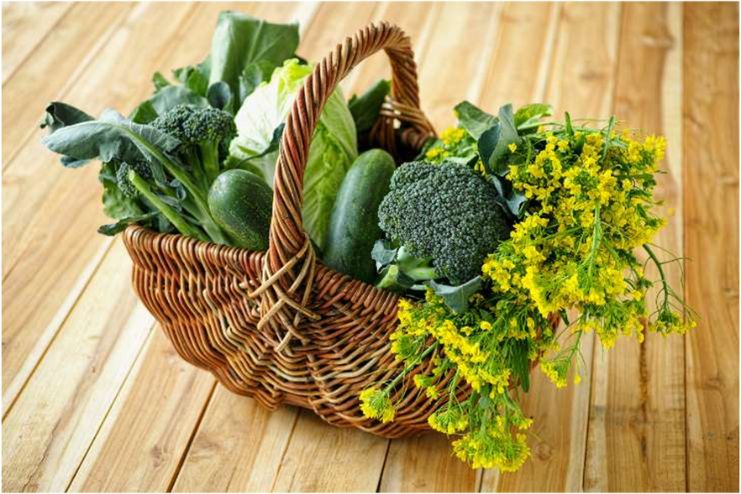
Broccoli, spinach, kale, and other dark green leafy vegetables are among the healthiest foods you can consume. Packed with fiber, vitamins, minerals, and phytochemicals, they lower your risk of colorectal cancer and many other cancers. Consuming a lot of leafy greens can also reduce your risk of diabetes and heart disease and help you maintain a lean body weight.
Folate is abundant in leafy greens and necessary for cell division and DNA repair, which helps to stop aberrant cervical cell development. Furthermore, flavonoids and carotenoids, abundant in leafy greens, have been demonstrated to prevent the growth of cancerous cells.
Tips for Adding More Leafy Greens to Your Diet:
- Smoothies: Blend kale or spinach into your morning smoothie for a nutritional boost.
- Salads: Include spinach and other mixed greens like arugula in your salads.
- Soups and Stews: Incorporate hardy greens, such as collard greens or kale, into your curries, soups, or stews.
- Omelets and Wraps: You can use leafy greens as a filler for sandwiches, wraps, and omelets.
- Sautéed Greens: For a quick and healthful side meal, lightly sauté spinach or kale with garlic and olive oil.
More leafy greens in your diet can strengthen your body’s defenses against cervical cancer and help you prevent it before it starts.
2. Cruciferous Vegetables
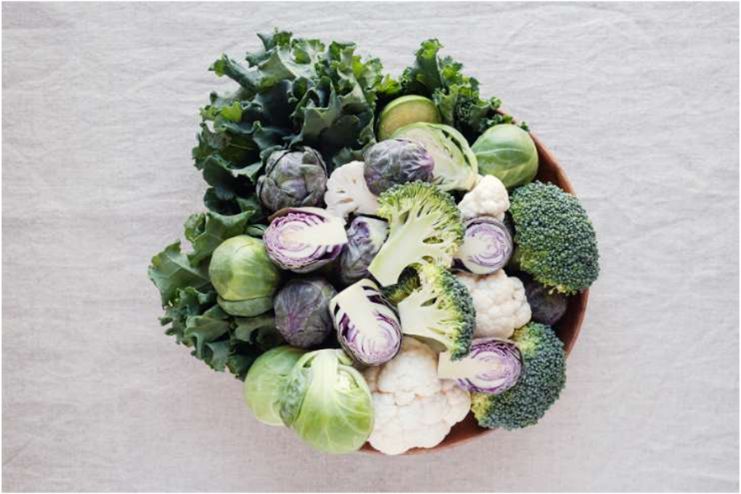
Sulforaphane is one of the potent cancer-fighting compounds found in cruciferous vegetables, including broccoli, cauliflower, and Brussels sprouts. These aid in the removal of the HPV virus. Numerous carotenoids, such as beta-carotene, lutein, and zeaxanthin, as well as vitamins C, E, and K, folate, and minerals, are abundant in cruciferous vegetables. The two compounds most commonly studied for their anticancer properties are sulforaphane (an isothiocyanate) and indole-3-carbinol (an indole).
Cruciferous vegetables contain a class of compounds called glucosinolates, which include sulfur. These compounds are the cause of the strong scent and bitter taste of cruciferous vegetables. During food preparation, chewing, and digestion, the body breaks down the glucosinolates to produce physiologically active substances such as indoles, nitriles, thiocyanates, and isothiocyanates.
They are also an excellent source of fiber. The high fiber content of these vegetables promotes gut health, which is important for immunological function and helps with digestion.
How to Increase Your Consumption of Cruciferous Vegetables:
- Raw or Steamed: Eat broccoli or cauliflower, either raw with hummus or lightly steamed to preserve nutrients.
- Stir-Fries: For a tasty side dish, sauté broccoli or brussels sprouts with garlic and olive oil.
- Soups and Casseroles: Add cruciferous vegetables to baked goods or blend cauliflower into soups.
- Roasted: Roast Brussels sprouts or broccoli with herbs and spices for a crunchy, tasty snack.
Regularly including cruciferous vegetables in your diet can benefit from their cancer-fighting properties and promote cervical health.
Read More: Post-Treatment Care for Cervical Cancer Survivors: Tips for a Healthy Life
3. Berries
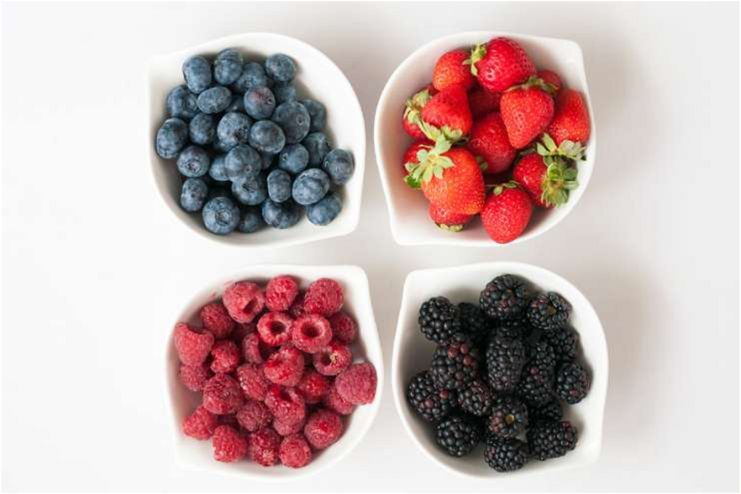
Studies show that chemical compounds in raspberries, blueberries, and strawberries shield cultured cells from breast and cervical cancer.
Berries are rich in antioxidants and studies have shown that these antioxidants protect the body from cell damage that can result in skin cancer and malignancies of the esophagus, bladder, lung, and breast. They contain ellagic acid, a potent antioxidant that may help delay tumor formation and prevent mutations in carcinogenic cells.
Flavonoids and polyphenols, natural plant substances that lower inflammation and decrease cancer cell growth, give blueberries their vivid colors. Due to their abundance of vital vitamins and minerals, blueberries are referred to as a “superfood.”
Berries are also abundant in Vitamin C, which strengthens the immune system and aids in the battle against infections like HPV, a significant risk factor for cervical cancer.
Simple Methods for Including Berries in Your Diet:
- Smoothies: Blend various berries with almond milk or yogurt for a cool beverage.
- Cereal & Oatmeal: Add frozen or fresh berries to your cereal or morning oats.
- Salads: Add blueberries or strawberries to a lush green salad for a taste explosion.
- Yogurt & Desserts: Berries can be used as a natural sweetener for sweets or added to Greek yogurt for a nutritious snack.
- Snacking: Eat a handful of fresh or dried berries for a wholesome, portable snack.
Berries are a tasty and simple way to increase your consumption of antioxidants, which fight cancer and promote cervical health.
4. Citrus Fruits

Citrus fruits, such as oranges, lemons, limes, and grapefruits, are rich in vitamins and minerals that support your health. Antioxidants like vitamin C and flavonoids, which have been connected to preventing cancer, are also plentiful in many of these fruits.
According to the American Institute for Cancer Research, a diet high in fruits and vegetables, especially citrus fruits, can help lower the risk of cancer. These foods contain phytochemicals that may help prevent cancer and essential vitamins and minerals. Research shows citrus fruit consumption may reduce the risk of various cancers.
Easy Ways to Increase Your Consumption of Citrus Fruits:
- Morning Juice: Drink a fresh orange or grapefruit juice to start the day.
- Salads & Dressings: Add lemon or lime juice to salads and homemade dressings.
- Smoothies: Blend citrus fruits with other antioxidant-rich berries for a health boost.
- Infused Water: Increase your hydration by adding lemon or orange slices to your water.
- Snacks & Desserts: Enjoy citrus fruits as a nutritious snack or incorporate them into fruit-based desserts.
Regularly consuming citrus fruits boosts the immune system, shields cells from harm, and actively prevents cervical cancer.
Read More: New Study finds IUD As A Potent Protector Against Cervical Cancer
5. Whole Grains
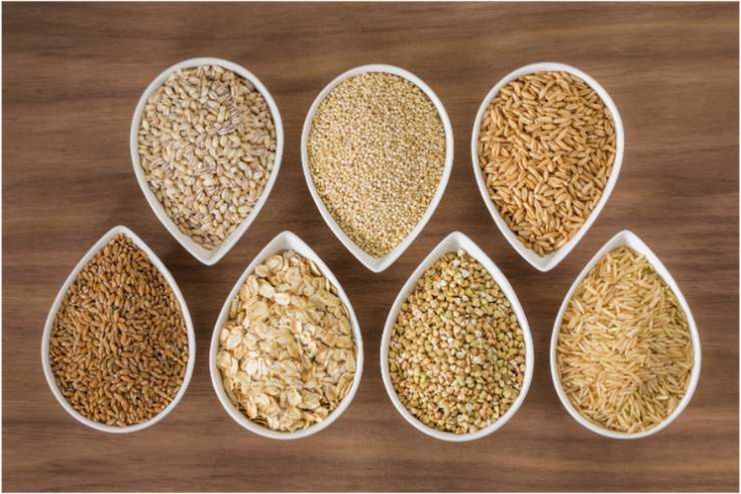
Rich in fiber, vitamins, minerals, and plant components, whole grains may lower your chance of developing cancer. Compared to refined grains, whole grains offer more minerals and dietary fiber. Fiber keeps blood sugar and cholesterol stable, helps maintain a healthy weight, and prolongs feelings of fullness.
Furthermore, fiber lowers chronic inflammation, aiding cancer development, and helps control blood sugar levels. Whole grains also include phytochemicals and antioxidants such as lignans and polyphenols, which help neutralize toxic free radicals and limit the formation of cancer cells.
Easy Ways to Incorporate Whole Grains into Your Diet:
- Swap refined grains: Use quinoa or brown rice instead of white rice.
- Eat whole grains to start the day: Choose whole-grain bread or oatmeal for breakfast.
- Choose whole-wheat options: Choose whole-wheat tortillas, bread, and pasta over refined varieties.
- Bake with whole grains: In baking recipes, use whole wheat flour rather than white flour.
Changing to whole grains can help your body’s natural defenses, improve your digestive health, and reduce your chance of cervical cancer.
6. Nuts and Seeds
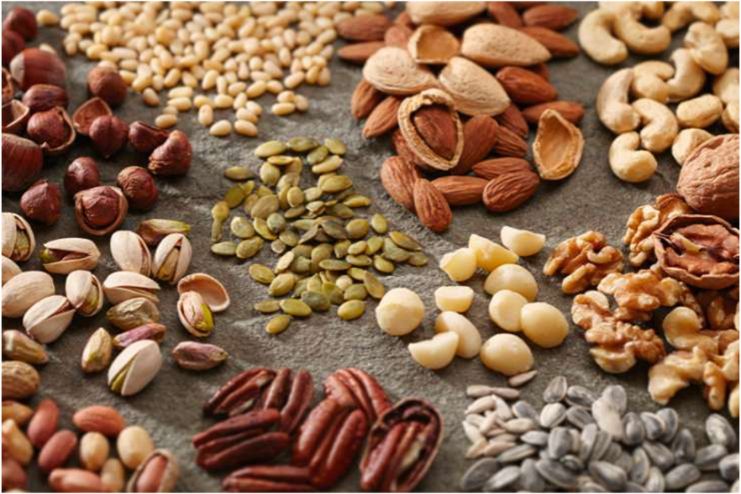
Nuts and seeds, including almonds, flaxseeds, chia seeds, and walnuts, are delicious and rich in valuable fats, vitamins, and minerals. For hundreds of thousands of years, nuts and seeds have played a significant role in human diets.
Monounsaturated and polyunsaturated fats, two types of good fats found in nuts and seeds, help lower chronic inflammation, a key factor in the development of cancer. Omega-3 fatty acids, in particular, have anti-inflammatory and anticancer properties by slowing the growth of abnormal cells.
They pack a healthy punch in a tiny, adaptable package! A handful of nuts or seeds daily is advised as part of a plant-based diet that may lower your risk of heart disease and cancer, among other chronic illnesses. Eat them as a snack—raw or toasted, ground or chopped on salads, or add them to savory or sweet dishes.
How to Include Seeds and Nuts in Your Diet:
- Snacks: A handful of walnuts or almonds makes a nutritious snack. You can also spread nut butter on veggie sticks, apple slices, or whole-grain toast.
- Smoothies: For an omega-3 and fiber boost, add chia or flaxseeds to your smoothies.
- Baked Goods: Add ground chia or flax seeds to bread, cookies, or muffins.
- Toppings: Add pumpkin or sunflower seeds to cereal, yogurt, or salads.
Regularly consuming nuts and seeds provides essential nutrients that promote overall health and prevent cancer.
Read More: 9 Daily Habits That May Reduce Cancer Risk
7. Garlic and Onions
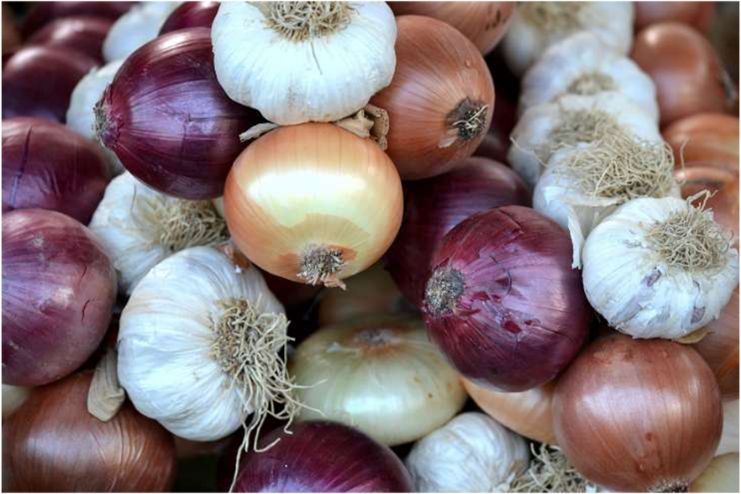
Garlic is rich in manganese, vitamins B6 and C, and selenium, which may help prevent the growth of cancer cells in the intestines. It is also an excellent seasoning and may help reduce your risk of stomach, colon, and breast cancer. Garlic also contains sulfur compounds that strengthen the immune system and support DNA repair mechanisms, which aid in preventing the mutations that cause cancer.
Onions contain an antioxidant called quercetin, which may help fight cancer by lowering inflammation. Studies have shown that yellow onions and shallots may be especially effective at preventing liver and colon cancers. They are rich in flavonoids, which function as antioxidants, protecting cells from damage and preventing cancer.
Easy Ways to Add Garlic and Onions to Your Diet:
- In stews and soups: Add onions and garlic to enhance the nutrition and taste of your favorite dishes.
- Stir-fries: Toss onions and garlic into sautés or stir-fries to give them more flavor and depth.
- On sandwiches: Add caramelized or fresh onions to sandwiches, pizzas, and meats as a garnish.
Incorporating garlic and onions into your meals regularly can help minimize the chance of cervical cancer while adding tasty, healthful flavors to your recipes.
8. Green Tea
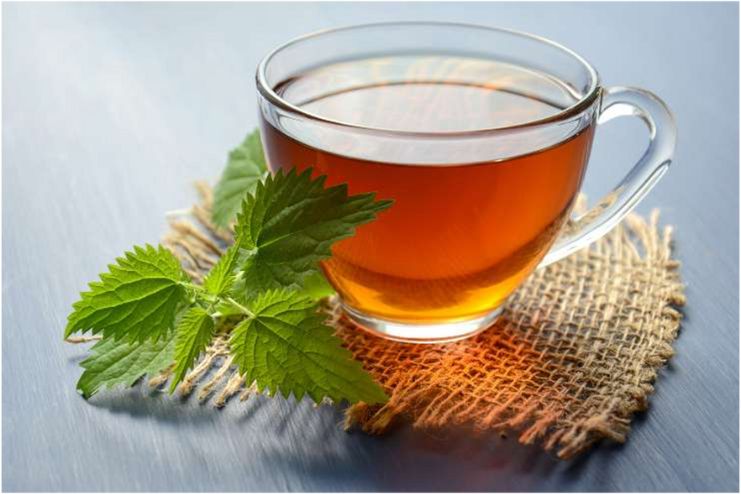
Green tea is becoming more popular as a cervical cancer treatment. According to research, a specific green tea extract can slow the growth of cervical cancer cells. This extract, often called epigallocatechin-3-gallate (say that ten times quickly!), or EGCG, is a potent treatment for cervical cancer. A strong antioxidant, EGCG is crucial for both preventing and treating cancer.
Green tea’s polyphenols, particularly EGCG, have been demonstrated to suppress the growth of cancer cells, prevent the development of new blood vessels that tumors require for growth, and encourage cellular apoptosis, which is the process by which injured cells undergo programmed cell death. By scavenging free radicals and lowering inflammation, these substances also aid in the body’s detoxification.
How to Include Green Tea in Your Everyday Activities:
- Morning Drink: Start your day with a warm cup of green tea to increase hydration and metabolism.
- Iced Green Tea: Make green tea, let it cool, and then sip it as a cool drink.
- As a Snack: Sip green tea with a small snack or lunch for extra health advantages.
A straightforward but efficient method to take advantage of green tea’s cancer-fighting polyphenols and promote cervical cancer prevention, in general, is to include it in your daily routine.
Read More: 5 Life-Saving Facts about the BRCA Gene and Ovarian Cancer
Conclusion
Cervical cancer can be prevented by including nutrient-dense foods in your diet, such as leafy greens, cruciferous vegetables, berries, citrus fruits, whole grains, nuts, seeds, garlic, onions, and green tea. Rich in antioxidants, good fats, vitamins, and phytochemicals, these potent foods boost your immune system, lower inflammation, and shield your cells from damage that can lead to cancer.
A varied, well-balanced diet is essential for improving general health and preventing cervical cancer. By making small, deliberate dietary changes, you’re investing in a better, cancer-resistant future.
References
- https://cancer.stonybrookmedicine.edu/patient-support/nutrition-services/nutrition-guidelines
- https://www.moffitt.org/cancers/cervical-cancer/faqs/do-certain-foods-fight-cervical-cancer
- https://www.gynecologiconcologyinstitute.org/news/cancer-prevention/cervical-cancer-7-foods-to-prevent-it
- https://www.medicalnewstoday.com/articles/does-diet-influence-cervical-cancer-risk
- https://pmc.ncbi.nlm.nih.gov/articles/PMC9348217
- https://www.mdanderson.org/publications/focused-on-health/cancer-fighting-foods-women.h16-1589046.html
- https://www.cancer.gov/about-cancer/causes-prevention/risk/diet/cruciferous-vegetables-fact-sheet
- https://www.phitsanulok-hospital.com/en/knowledges/9-foods-to-reduce-cervical-cancer-risk
- https://www.webmd.com/cancer/ss/slideshow-cancer-fighting-foods
- https://agresearchmag.ars.usda.gov/2001/may/berry
- https://www.mdanderson.org/publications/focused-on-health/foods-lower-cancerrisk.h29Z1590624.html
- https://medicine.missouri.edu/news/berry-gives-boost-cervical-cancer-therapy
- https://www.medicalnewstoday.com/articles/320517#Blueberry-extract-tricks-cancer-cells
- https://www.oncnursingnews.com/view/blueberries-may-help-treat-cervical-cancer-
- https://www.cancer.gov/about-cancer/causes-prevention/risk/diet/antioxidants-fact-sheet
- https://cancercenterforhealing.com/citrus-fruits-and-cancer-risk
- https://pmc.ncbi.nlm.nih.gov/articles/PMC7199889
- https://www.aicr.org/cancer-prevention/food-facts
- https://www.aicr.org/cancer-prevention/food-facts/whole-grains
- https://www.roswellpark.org/cancertalk/202402/crack-open-health-benefits-nuts-seeds
- https://www.aicr.org/resources/blog/nuts-for-cancer-prevention-health-benefits-and-hype
- https://pubs.acs.org/doi/abs/10.1021/jf0307144
- https://pmc.ncbi.nlm.nih.gov/articles/PMC2918290
- https://womeninbalance.org/2013/08/13/green-tea-and-cervical-cancer














